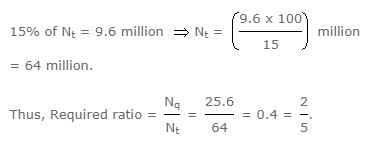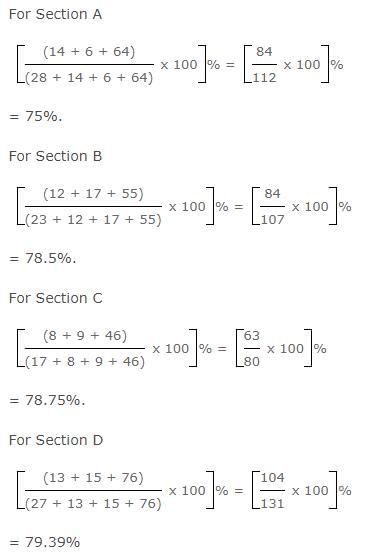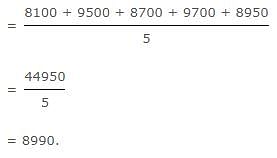MCQ: Table Charts - 2 - SSC CGL MCQ
15 Questions MCQ Test Quantitative Aptitude for SSC CGL - MCQ: Table Charts - 2
The following table gives the percentage distribution of population of five states, P, Q, R, S and T on the basis of poverty line and also on the basis of sex.
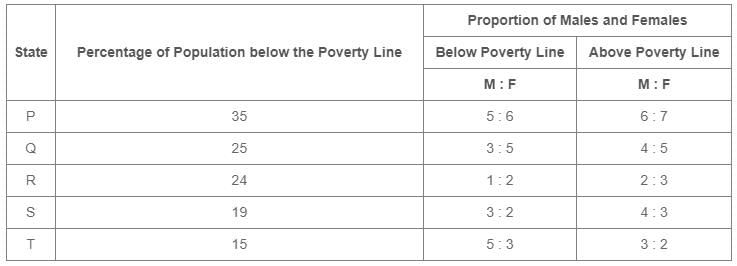
Q. If the male population above poverty line for State R is 1.9 million, then the total population of State R is?

The following table gives the percentage distribution of population of five states, P, Q, R, S and T on the basis of poverty line and also on the basis of sex.
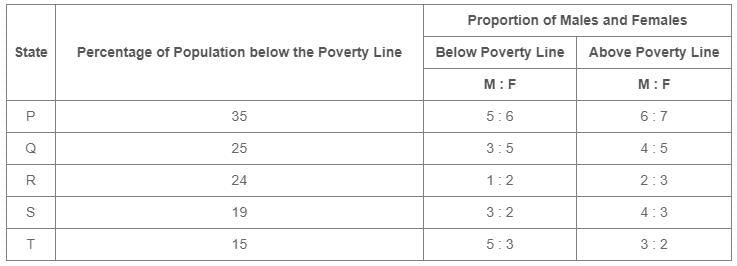
Q. What will be the male population above poverty line for State P if the female population below poverty line for State P is 2.1 million?

| 1 Crore+ students have signed up on EduRev. Have you? Download the App |
The following table gives the percentage distribution of population of five states, P, Q, R, S and T on the basis of poverty line and also on the basis of sex.

Q. If the population of males below poverty line for State Q is 2.4 million and that for State T is 6 million, then the total populations of States Q and T are in the ratio?

The following table gives the percentage distribution of population of five states, P, Q, R, S and T on the basis of poverty line and also on the basis of sex.

Q. What will be the number of females above the poverty line in the State S if it is known that the population of State S is 7 million?
A school has four sections A, B, C, D of Class IX students.

Q. Which section has the maximum success rate in annual examination?
A school has four sections A, B, C, D of Class IX students.

Q. Which section has the minimum failure rate in half yearly examination?
A school has four sections A, B, C, D of Class IX students.

Q. How many students are there in Class IX in the school?
A school has four sections A, B, C, D of Class IX students.

Q. If the number of students passing an examination be considered a criteria for comparison of difficulty level of two examinations, which of the following statements is true in this context?
A school has four sections A, B, C, D of Class IX students.

Q. Which section has the maximum pass percentage in at least one of the two examinations?
Study the following table and answer the questions.

Q. Total number of candidates qualified from all the states together in 1997 is approximately what percentage of the total number of candidates qualified from all the states together in 1998?
Study the following table and answer the questions.

Q. The percentage of total number of qualified candidates to the total number of appeared candidates among all the five states in 1999 is?
Study the following table and answer the questions.

Q. What is the average candidates who appeared from State Q during the given years?
Study the following table and answer the questions.

Q. In which of the given years the number of candidates appeared from State P has maximum percentage of qualified candidates?
Study the following table and answer the questions.

Q. What is the percentage of candidates qualified from State N for all the years together, over the candidates appeared from State N during all the years together?
Study the following table and answer the questions.

Q. Combining the states P and Q together in 1998, what is the percentage of the candidates qualified to that of the candidate appeared?
|
314 videos|170 docs|185 tests
|
|
314 videos|170 docs|185 tests
|











